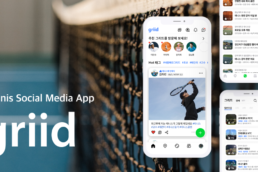Android App developers are in hot demand in Korea, which makes sense since Samsung alone holds a 38% market share in 2023. However, android app development is not even remotely close to what it was before. Many developments have changed the ball game, especially regarding Android app development. One of the major concerns about developing Android solutions is creating a flawless interface that is friendly to users.
Doing so is not always easy because new operating systems are launched, and app development faces different problems.
Top 6 tips for developing a flawless Android app with a seamless interface
1. Ensuring that the latest frameworks are used
Before developing your app, much focus must be invested in startup branding because that will set the tone for the brand voice you’ll accentuate on the app. Once you have gotten that out of the way, aim to use the latest frameworks and tools during development.
The reason is that many people are constantly trying to update their gadgets. Using an old framework might not cut it for a brand-new Samsung Galaxy S21.
To avoid any performance issues and to keep the app in the best condition without the need to release patch updates frequently, ensure that you’re using the latest frameworks. Ensure the entire development environment is updated before embarking on the new project.
2. Compatibility is paramount
As per several technology essay writing service reviews, apart from using the latest frameworks, you should also ensure compatibility to cater to the entire or vast majority of potential users. If the app is compatible with only the latest devices, other models might suffer. That is why it is important to find that sweet spot.
That means not using excessively high-end solutions when there was a pragmatic solution reasonable for all users. Many other solutions can be implemented to ensure the app is compatible with other Android devices.
Another solution could be using responsive frameworks and code that allows different screen sizes to be used seamlessly. In whatever you do, try to avoid catering to one demographic only because this will limit the traffic incurred by the app you’ve developed.
3. Optimizing app development by adhering to ADG
Whenever developing Android apps, there are additional support and knowledge bases that you can consult and refer to. These knowledge bases are very efficient and can help Android app developers optimize their development process. As a result, apps will be much more efficient, and they might have a seamless interface, which improves the app’s performance. One of these knowledge bases you can refer to includes the Android Development Guidelines (ADG).
These guidelines are the most important documentation when developing an Android app. These guidelines are updated now and then to ensure they align with the latest industry standards. You can even develop cutting-edge apps for the latest devices, such as the Samsung Galaxy S23, with the guidance of these guidelines.
4. Developing cloud-based solutions
If you are experiencing sluggish behavior from your app or are simply keen on optimizing its performance right from the start, consider using the cloud. These cloud solutions are much more efficient than developing and hosting the app on your server.
A lot could go wrong when attempting to do this, which is in contrast with using cloud-based solutions. The latter has significantly lower downtime, and since everything is stored in the cloud, the loading speed gets faster.
These are some of the huge benefits of switching to cloud-based solutions. The flawless Android development benefit can also help save costs from procuring and managing servers on-site.
You can choose the solution that fits you best from various options.
5. Fault-finding performance hindrances
As you are developing the app, it is your responsibility to note any hindrances that might directly impact the performance. There are many different causes of poor app performance.
However, when developing the app, look for large media, unused variables, and files. Remove any unnecessary files and variables, but it can get tricky regarding media files.
These might be necessary for the User Interface, and removing them is not the best option. In this case, try to compress and minimize the file size so that it does not cause delayed performance.
There are other matters to consider, and they might be specific to the project you’re undertaking. In this case, you can research the best solution to find faults likely to cause performance issues.
6. Optimizing overall performance
Optimize all facets that impact the app to have a flawless Android development experience. Be on the lookout for any potential problems, and if you detect that some trouble might be on the horizon, stop and test.
Testing the app is crucial because it simulates how it would perform in a real-life scenario.
To take this a step further, consider testing as you develop to detect performance issues quickly. One of the best principles to implement includes CD/CI.
As you develop the app, you integrate its components and test it to see any performance irregularities. That saves the time used during the development phase. At the same time, you will be developing a reliable solution.
In conclusion
Developing a flawless Android app takes collective efforts that work towards the goal of improving the app’s performance. Such efforts include testing as you develop the app and noting down any issues that might arise. At the same time, do not neglect to compress media files that are necessary to the app. Also, remove unused, unnecessary files because they slow down the app without any purpose.
Popular
Related Posts






